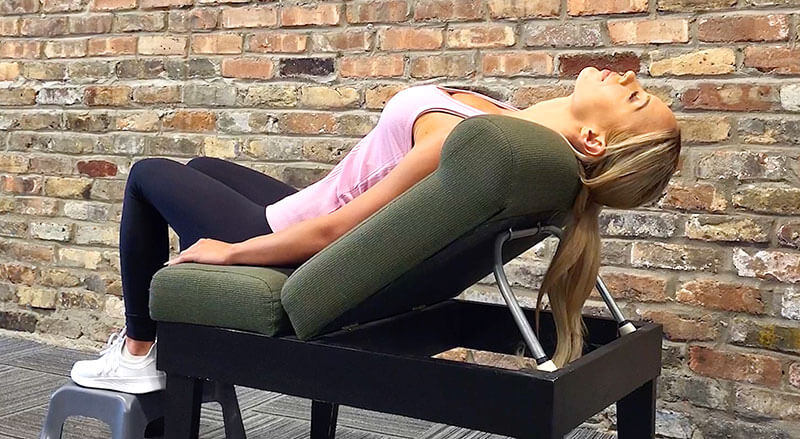
7 Surprising Causes of Back Pain
Before jumping to more serious conclusions, screen yourself for these 7 surprising causes of back pain that may be less obvious, but just as significant for understanding and managing your pain.

You may have seen video ads showing chiropractors loudly “cracking” patients’ backs (an inappropriate slang term for a chiropractic adjustment). But if you’re struggling with the excruciating pain of a herniated disc, you may think a so-called “crack” is that last thing you need.
What you may not realize is that Doctors of Chiropractic are trained to apply not one, but dozens of highly specialized techniques for specific conditions and condition severities — and not all of them are abrupt adjustments accompanied by a popping sound when gases are released.
Why see a chiropractor for herniated disc pain? Because these musculoskeletal professionals have years of experience with gentle, personalized techniques for alleviating herniated disc pain that can be aggravated by even the smallest movement.
An extensive clinical trial performed on hundreds of patients published in the European Spine Journal showed that people who saw a chiropractor were less likely to end up having surgery for their herniated disc. That’s because Doctors of Chiropractic are well-versed in many more bio-mechanical techniques than the one portrayed in popular ads.
Spinal discs are rubbery pads that support and cushion your vertebrae — like spinal shock absorbers. A disc becomes herniated when it protrudes out of its position between two vertebrae.
Even one disc that slips even slightly out of place can press on a nerve. A compressed nerve can cause excruciating pain and potentially lead to other neuro-musculoskeletal dysfunctions.
Discs most often herniate via these common injuries:
No matter what the cause, chiropractic care can offer not only pain relief, but corrective treatments for any misalignments that may be causing inflammation — which can aggravate your herniated disc even more.
If a disc slips out of position, it puts pressure on the nerves that run through your spinal column — that’s what causes your pain. The specific type of pain you experience will depend on the location of your disc protrusion, and may be accompanied by these common symptoms:
You may feel these symptoms far from the compressed nerve itself because your nerves branch throughout your entire body. That’s why tracking your pain can help your DC diagnose it.
So, if you’ve herniated a disc in your neck, for example, you may feel numbness and tingling in your wrist. This is called “referred pain” — pain felt in a location different from its cause — like the super cold ice cream in your mouth that causes “brain freeze” in your sinuses.
To help relieve your pain and get you moving like yourself again, your Doctor of Chiropractic will craft a personalized care plan that may include gentle soft tissue therapies, intermittent traction and graded mobilization.
This gentle spinal movement aims to reduce the pressure on your herniated discs with the help of a specialized drop table that allows your chiropractor to apply a gentle pumping to the affected area.
When you relax on the drop table your DC can eliminate your active movement, which enables the affected region to decompress without interference. By gently changing your body positions they can promote healing by relieving your neck, back, leg, or arm tension so you can gradually gain back your usual mobility.
This therapy leverages cushioned wedges specifically designed for chiropractic care. Your DC will gently and strategically place these wedges under both sides of your pelvis to encourage your herniated disc to naturally draw away from the compressed nerve.
This position stretches your spine just enough to take the necessary amount of pressure off of it. Besides helping to decompress herniated discs, pelvic blocking can promote treatment of other conditions like headaches and other body aches.
Your DC will determine which type of traction therapy you need depending on the amount of force necessary to supply a sufficient weight to decompress your nerve.
After enjoying your DC’s gentle manual traction to stretch your muscles and bones, your own weight may be used to provide additional traction. This can be accomplished during a prescribed number of minutes in a traction chair like this one at Chiro One Wellness Centers:

If your specific type of herniated disc allows for it, you may be asked to do some supervised in-clinic walking traction — a more advanced form of traction which applies force on the back part of your neck pulling your head back to both stretch out muscles and help reshape your ligaments.
Walking traction signals to your brain the correct position of your neck joints, decompressing your nerves and building good posture habits which can prevent another disc herniation in the future.
Once your DC has removed the pressure off of your nerve, they may determine that your body is ready for graded mobilization. This manual therapeutic technique promotes movement (or mobility) in your tissues and joints that have become stagnant.
Joint mobilization is gentle stretching (a fraction of an inch at a time) often divided into grades that each patient progresses through at their own pace and ability:

If and when your herniated or misaligned vertebrae or joints progress through these four stages, your DC may decide that you are ready for a Grade 5 mobilization — the high-velocity, low-amplitude thrust called a chiropractic adjustment.
Depending on your condition and how treatment is progressing you may eventually receive one or more of these therapies: Direct Thrust Technique, Spinal Mobilization, Articulatory Technique, Myofascial Release, Muscle Energy Technique, Functional Technique, Gonstead, Activator or Thompson methods.
Once you’re moving like your old self again and want to continue doing so, your DC will prescribe in-clinic active therapies to help improve your mobility. They may also recommend lifestyle changes (spine sparing strategies) to protect and strengthen your neuro-musculoskeletal system.
Check in with your nearest Chiro One doc at one of our welcoming open-plan clinics across the country. They’ll perform a thorough exam to investigate the root cause of your pain, then personalize your care plan — a combination of gentle chiropractic adjustments and active therapies to get you feeling better longer. Find a Chiro One doctor near you.
Subscribe and get news, articles & offers sent right to your inbox each month.
"*" indicates required fields
By subscribing you are agreeing to the Terms and Conditions and Privacy Policy.